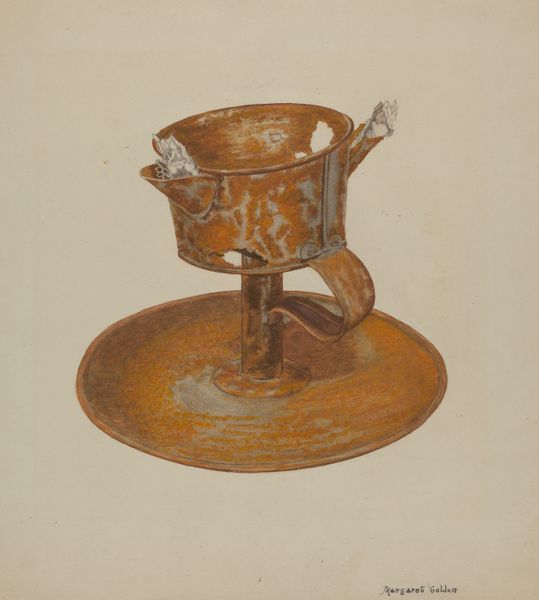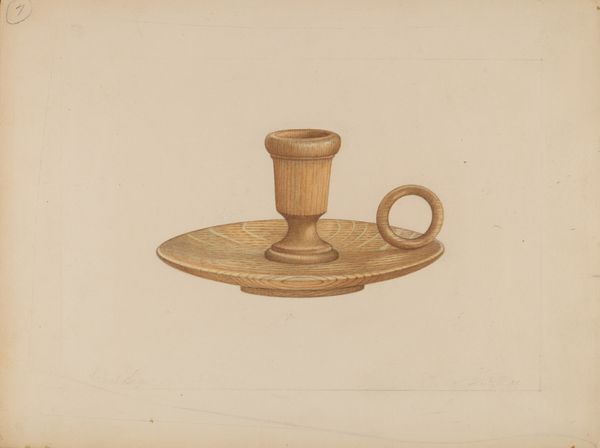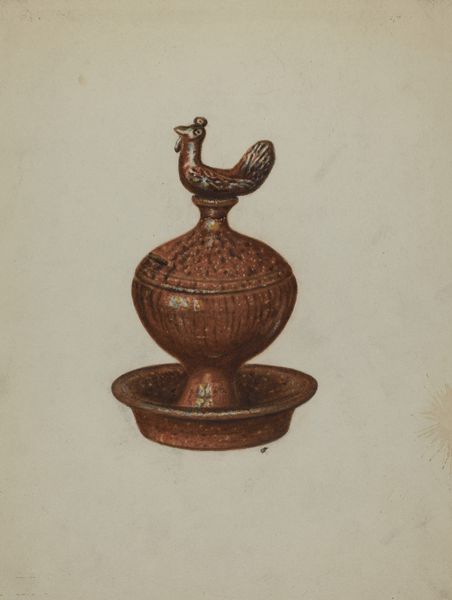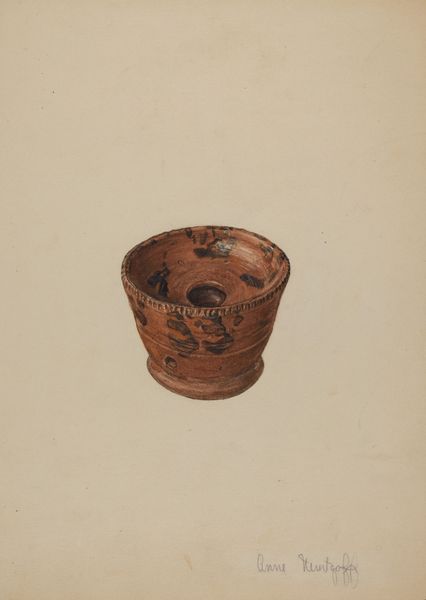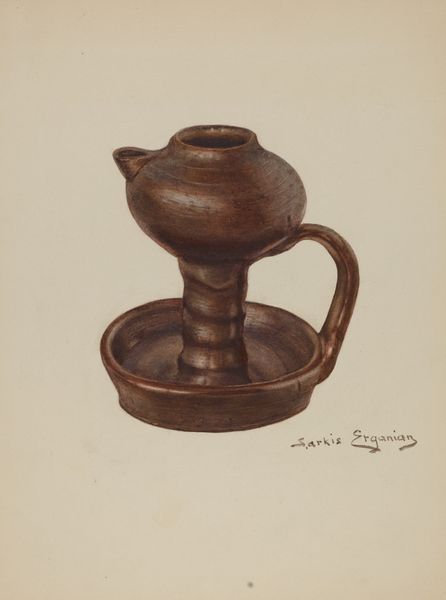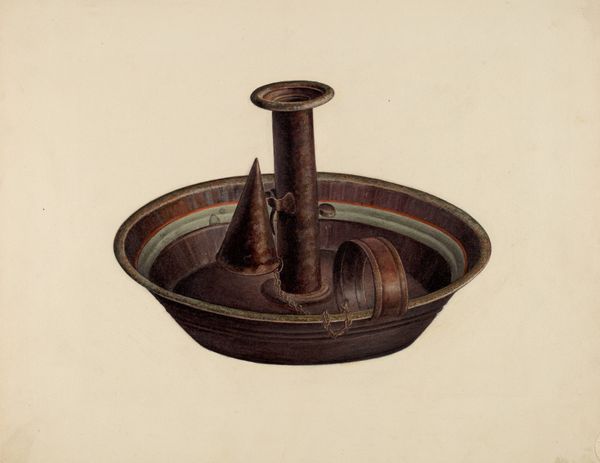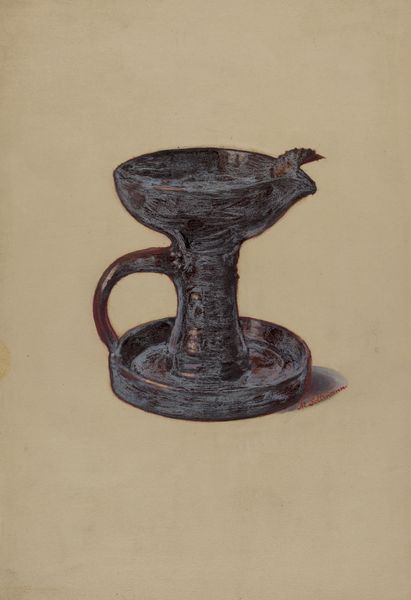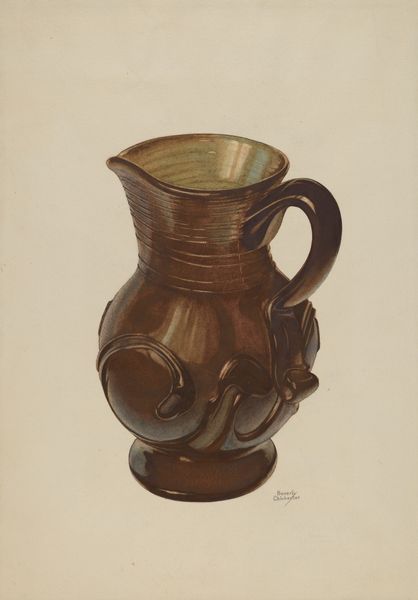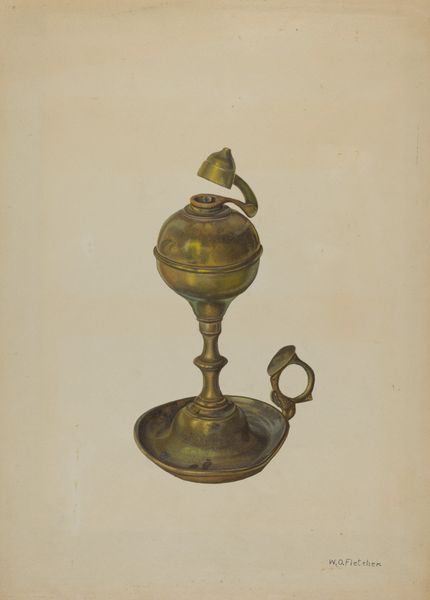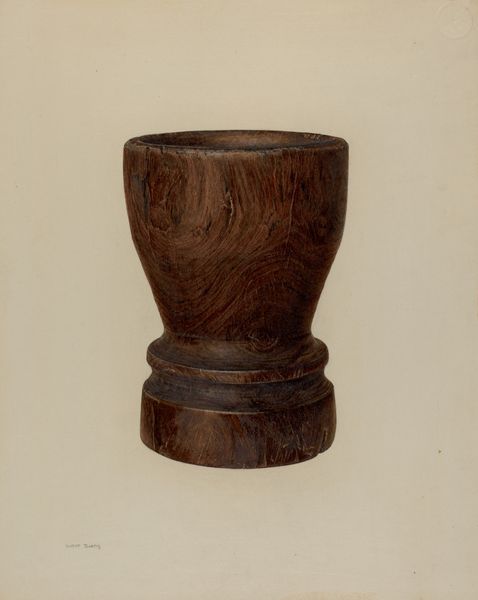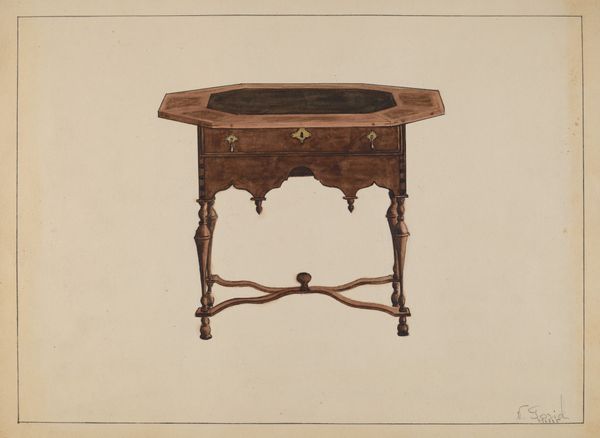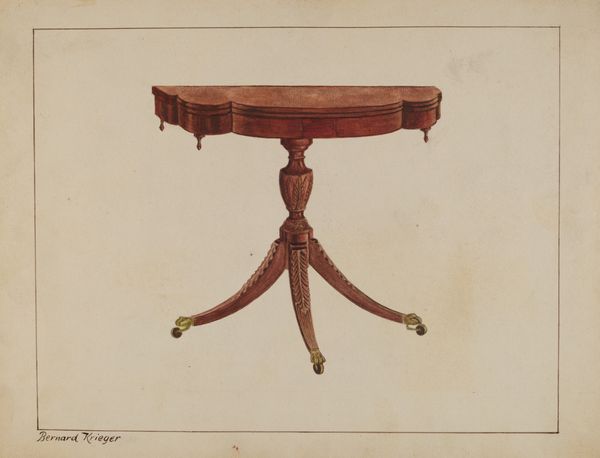
drawing, watercolor
#
drawing
#
oil painting
#
watercolor
#
watercolour illustration
#
watercolor
#
realism
Dimensions: overall: 24.2 x 34.2 cm (9 1/2 x 13 7/16 in.) Original IAD Object: 5" in diameter; 4 1/8" high
Copyright: National Gallery of Art: CC0 1.0
Curator: Here we have William Frank's "Skillet," created in 1938, seemingly a watercolour drawing. Editor: It’s interesting. The drawing possesses a stark and simple quality. It presents what appears to be an old cooking pot, rendered realistically, which gives off an earthy tone through the use of browns. Curator: Indeed. The attention to detail in representing the wear and tear on this object is fascinating, making the skillet not just an item but an artefact with a past, possibly reflecting rural or domestic life during the Depression era. I am particularly drawn to Frank’s decision to render a mundane cooking tool in such exquisite detail. How does its function relate to the societal structures? What was this used to cook? Editor: You're focusing on its context; I appreciate that. To me, this reminds me of a bygone era, particularly with that long, almost medieval-looking handle. It speaks to craftsmanship and perhaps a simpler time, when tools were not mass-produced but were unique, lasting items. In relation to labour, imagine cooking over an open fire with this, so much work, which these days is a button click. Curator: I agree. Looking at its form and method of creation brings up questions about accessibility of art itself. A drawing made during a period marked by poverty makes it inherently political and very social. Maybe a quiet rebellion against industrialism by honoring something commonplace. Also, consider that while an oil painting seems highbrow this drawing with watercolor gives power to accessibility. Editor: Absolutely. The medium definitely influences how we understand its meaning and how that medium would be read or regarded back then, in a socio-economical way. The use of drawing and watercolor also highlights a delicate treatment of an object that has surely seen much hard use and time. Curator: Yes, exactly! It almost seems the choice of materials – watercolour instead of oil, for example – is key in unlocking the political or cultural associations inherent in Frank's decision. In doing this the artist brings the quotidian object to an almost aristocratic plane, with dignity. Editor: It really makes you consider the art and the impact. Now I’m curious about other objects of the time depicted with the same regard. Thanks.
Comments
No comments
Be the first to comment and join the conversation on the ultimate creative platform.

